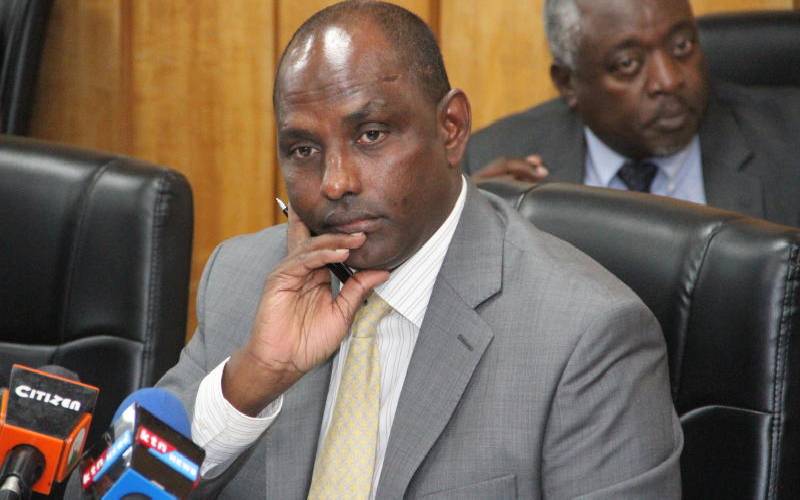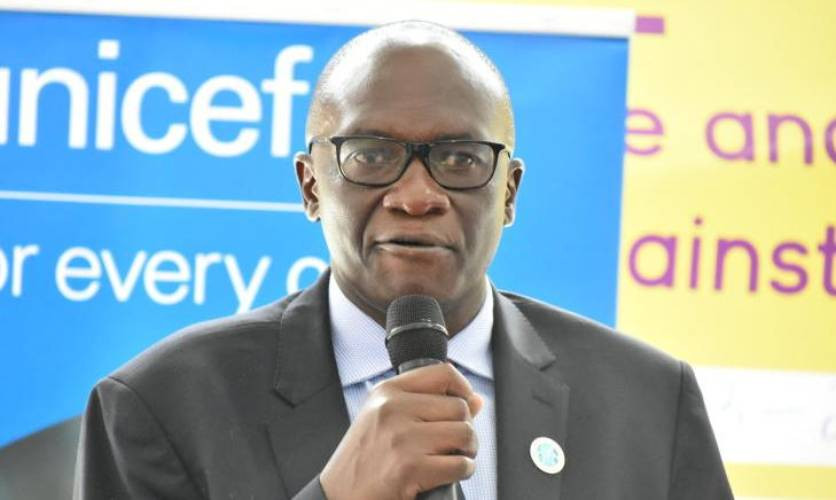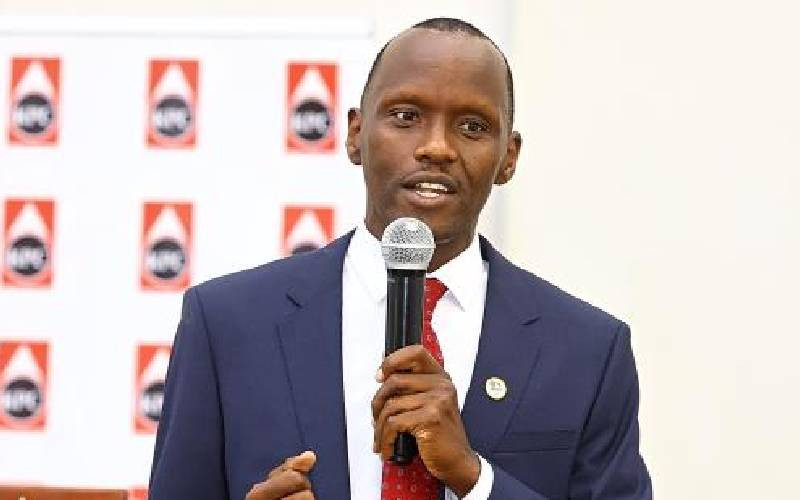
Tomorrow should be a beautiful day for National Treasury Cabinet Secretary Ukur Yatani (pictured).
Unfortunately, the two-hours of fame for Yatani, when he gets to read his maiden budget speech to the nation as the 16th finance minister, will most likely be clouded by the despondency of Covid-19 pandemic.
Ordinarily, the speech is supposed to be a climax to what is normally a long, tedious and sometimes frenetic budget-making process. Consequently, finance ministers and their handlers take this opportunity to pause for breath. It is supposed to be an easy day of boutonnière, smiles, and toasts.
It starts in the afternoon with the minister emerging from Treasury Building along Harambee Avenue, Nairobi, the symbolic budget briefcase in his hand. Sandwiched by some other two Treasury mandarins, he then poses for a photo while jacking up the briefcase slightly for good effects. All smiles, they take the short walk to Parliament Buildings as the cameras click away.
New normal
But this is 2020, and Covid-19 has ushered a new normal. Yatani’s smile, if he has the energy to conjure one, will be hidden behind a facemask. What was supposed to be a light moment for him might turn out to be a somber one, an occassion clouded by a pandemic which has left in its wake an economic crisis.
Millions have lost their jobs as hundreds of thousands of businesses have yielded under the heavy weight of the containment measures that have been implemented to curb the spread of Covid-19.
Yatani wants to spend Sh2.73 trillion not only to pay salaries, pensions, debts and other recurrent items, but also to reboot the economy. Besides pumping money into President Uhuru Kenyatta’s Big Four Agenda and other development projects, Yatani also wants to help airlines get back to the skies and for flowers, tea and coffee to reach European markets.
He wants to get machines in the factories to start humming again, hotels in the coastal strip to entertain guests, the SGR to transport goods and passengers between Mombasa to Nairobi.
Ironically, to stimulate the economy, Yatani will need these troubled businesses and burdened Kenyans to pay Sh1.6 trillion in taxes. MPs doubt Treasury can hit the target under the current circumstances. And so do experts.
“I think it is an ambitious target,” said Churchill Ogutu, a research analyst at Genghis Capital, an investment firm.
“We are not yet out of the woods and we do not fully know the duration and severity of the Covid-19 shock. The negative knock on demand with international trade disrupted, business investment anemic and reduced consumption due to layoffs and slashed income means that the tax revenue streams will be constrained,” he added.
The deficit will be plugged through grants from donor partners and net borrowing of Sh836 billion, mostly from the domestic market.
In a way, Yatani wants to speed up the flow of money in the economy, but with people still immobilised by a night curfew, partial lockdowns of Nairobi and Mombasa and a ban on all kinds of social gatherings, there will be little economic activities that can provide the National Treasury with enough taxes to fund the expansive budget.
Stay informed. Subscribe to our newsletter
Economic forecasters have been more pessimistic. For some, this will be the worst for Kenya since it gained independence. For the remaining months of the year, costs of food, fuel, school fees and rent may prove too hard of a burden for many.
Almost every reputable economic institution has projected a decelerated economic growth of not more than three per cent. Last year, the economy grew by 5.4 per cent.
Negative growth
The last time real gross domestic product (GDP) - the monetary value of goods and services produced in an economy - recorded such a dismal growth of below three per cent was just after the repeal of Section 2A of the Constitution. To put this in context, prior to 2020, the country’s worst year came in 1992, when the economy contracted by 0.8 per cent.
However, according to the World Bank, with the containment measures spilling over to the second half of the year, it could be worse. The country’s economy could shrink by Sh974 billion this year.
Financial consultancy firm McKinsey & Company, which has made this projection, also predicts that this negative growth of five per cent will see the value of the country’s wealth drop by Sh1 trillion.
Re-opening economy
And at least for the next 30 days, most airplanes will remain grounded after President Uhuru Kenyatta directed that the Kenyan airspace remains closed to international passenger flights for another 30 days. Without airlines, travel agencies have furloughed their employees.
Movement of people into and out of Nairobi Metropolitan is still restricted.
The head of state noted that while he wished to ease restrictions, the trajectory of the infections forbade him.
Instead, the president will today be convening an extraordinary session between the national and county governments to review the effectiveness of the containment measures; get each county to commit to delivering isolation facilities with at least 300-bed capacity and come up with protocols for progressive re-opening of the economy.
Meanwhile, the economy continues to bleed despite government’s efforts to contain the hemorrhage.
The number of adults who were either actively looking for work or were simply economically inactive might have shot up by four million to 10.9 million in April compared to seven million in December last year, according to analysis of official data.
A big chunk of these jobless people, noted a household survey by the Kenya National Bureau of Statistics (KNBS), struggled to pay rent on time in April. And nearly all of them were not aware when they would return to work.
Another survey by audit firm KPMG and the Kenya Association of Manufacturers (KAM) shows that 40 per cent of manufacturers had laid off casual workers.
Kenyatta said in a speech last week that the Government had injected Sh216 billion into the economy through tax refunds, rebates and waivers in the first phase of its efforts to revive the economy. It is expected to spend an additional Sh53.7 billion in the second phase that will start in the next financial year.
However, it looks like this money has found its way in the bank accounts of big corporations and wealthy individuals. Banks too have benefited from the flow of cash from the State and their vaults are brimming.
Thus, total supply of money in the economy - which includes all currency outside of banks, those in banks, deposits by national and county governments, foreign deposits, long-term deposits - increased to Sh3.7 trillion in the period under review compared to Sh3.4 trillion in April last year.
That banks are swimming in cash can also be seen in the decline in interbank rate, the rate at which banks lend to each other. As a result of government’s payments and support from CBK, the interbank rate fell to 2.69 per cent on Friday, the lowest since August 2 last year when it was at 2.67 per cent.
Unfortunately, this money, much of which has been paid by government, has not percolated into the economy yet.
Data from CBK shows that automated teller machines (ATMs) transactions - through debit cards, credit cards, point of sale machines (POS) and prepaid cards - declined significantly. And so did mobile money transactions which declined despite waiver of fees on transfer of Sh1,000 and below as a means to discourage the use of notes and coins and curb the spread of the coronavirus.
Record lows
The value of money transacted through ATMs declined by a third to Sh35.2 billion in April from Sh52.1 billion in March, according to CBK data. Year-on-year, this was a drop of 44.6 per cent compared to Sh63.6 billion that were transacted in April 2019.
There were 4.13 million transactions on these channels, a record low since CBK started putting together this data in July 2009.
The value of mobile money transactions dropped by 15 per cent from Sh364 billion in March to Sh308 billion in April.
There were 125 million transactions, the lowest since August 2017 when there were 120 million mobile transactions. However, in August 2017 there were only 35.3 million mobile money subscribers compared to 59.4 million in April 2020.
Banks have also restructured a number of loans, with repayment for personal loans valued at Sh102 billion being extended.
But still, small businesses, which employ majority of Kenyans but have thin balance sheets, have taken a serious hit, according to CBK Governor Patrick Njoroge.
Njoroge noted that if nothing is done, three quarters of businesses are likely to die by end of this month. He asked the Government to urgently unveil the credit guarantee schemes noting that it would forestall the death of many small businesses.
“MSMEs don’t have a lot of buffers. They generally would die quickly,” said Njoroge during his post-MPC briefing.
As part of his Sh53.7 billion eight-point economic stimulus programme that he unveiled on Saturday, Kenyatta noted that the Government will inject Sh3 billion as seed capital for the SME Credit Guarantee Scheme.
“The intention here is to provide affordable credit to small and micro enterprises. And to do so in an efficient and structured manner, borrowing from the professional standards and practices of private sector credit arrangements,” the president said.
 The Standard Group Plc is a
multi-media organization with investments in media platforms spanning newspaper
print operations, television, radio broadcasting, digital and online services. The
Standard Group is recognized as a leading multi-media house in Kenya with a key
influence in matters of national and international interest.
The Standard Group Plc is a
multi-media organization with investments in media platforms spanning newspaper
print operations, television, radio broadcasting, digital and online services. The
Standard Group is recognized as a leading multi-media house in Kenya with a key
influence in matters of national and international interest.
 The Standard Group Plc is a
multi-media organization with investments in media platforms spanning newspaper
print operations, television, radio broadcasting, digital and online services. The
Standard Group is recognized as a leading multi-media house in Kenya with a key
influence in matters of national and international interest.
The Standard Group Plc is a
multi-media organization with investments in media platforms spanning newspaper
print operations, television, radio broadcasting, digital and online services. The
Standard Group is recognized as a leading multi-media house in Kenya with a key
influence in matters of national and international interest.









